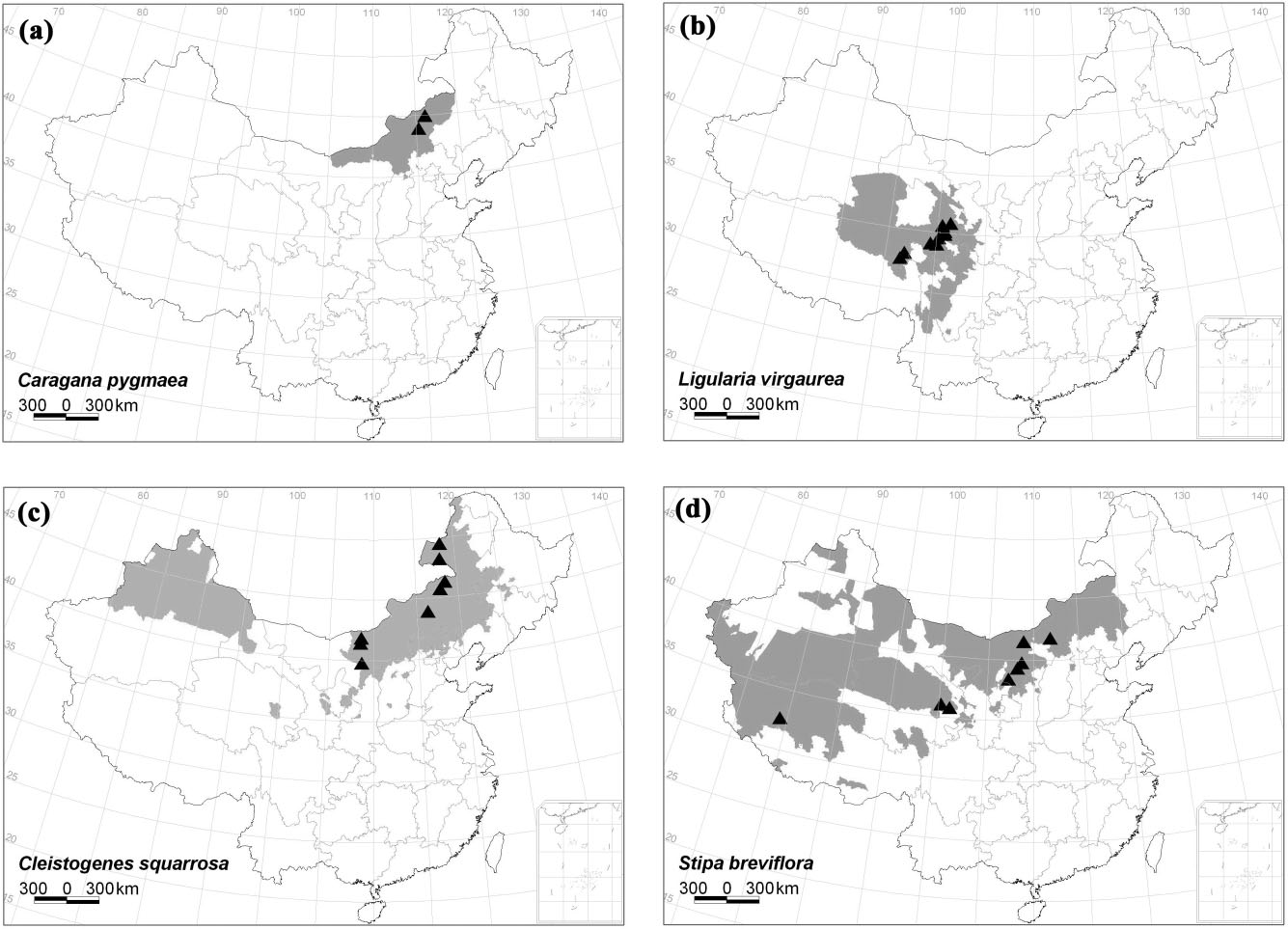Aim Our aim was to address the potential effect of the geographical range size of species on the relationships between plant traits, soil and climate in Chinese grasslands. Previous analyses tended to examine plant–environment relationships across many species while ignoring that species with different range sizes may respond differently to the environment. Here we hypothesized that leaf traits of narrowranging species would be more strongly correlated with soil and climatic variables than those of wide-ranging species.
Location Chinese grasslands.
Methods Data on leaf traits, including nitrogen and phosphorus concentrations, carbon/nitrogen ratio, nitrogen/phosphorus ratio and specific leaf area, as well as species range sizes for 208 species distributed across 178 sites in Chinese grasslands were collected. Soil and climate information for each study site was also gathered. The effects of range size on leaf traits were tested using one-way ANOVA. Correlations between leaf traits, soil and climate were calculated for all species pooled together and for species partitioned into range size quartiles, from the first (narrowest- ranging 25%) to the fourth (widest-ranging 25%).
Results Narrow-ranging species tended to occur at high altitude with lower temperature but higher soil nutrient concentrations compared with wide-ranging species. No direct link between leaf traits and species range sizes was detected. However, patterns of leaf–soil nutrient relationships changed significantly across levels of range size.Narrow-ranging species tended to be more sensitive to variation in soil nutrient availability than wide-ranging species, resulting in a shift from a positive leaf–soil nutrient relationship for narrow-ranging plants to no relationship for wide-ranging plants. Species responses to climatic variables were unrelated to their range sizes.
Main conclusions The close relationship between leaf and soil nutrients indicates a specialization of narrow-ranging species to particular habitats whereas wide-ranging species may be able to better withstand changes in environment such as soil fertility over a large area.

Figure Geographical distributions of plant species in each range size quartile. Quartiles range from the first (narrowest-ranging 25% of
species, a) to the fourth (widest-ranging 25% of species, d). The four representative species are Caragana pygmaea (a), Ligularia virgaurea
(b), Cleistogenes squarrosa (c) and Stipa breviflora (d). Triangles represent the sampling sites of each species.
Additional Information:
1. Author Information:Yan Geng, Zhiheng Wang, Cunzhu Liang, Jingyun Fang, Frank Baumann, Peter Kühn, Thomas Scholten and Jin-Sheng He
Correspondence: E-mail: jshe@nwipb.cas.cno
2. Published : Global Ecology and Biogeography, (Global Ecol. Biogeogr.) (2012) 21, 416–427.
